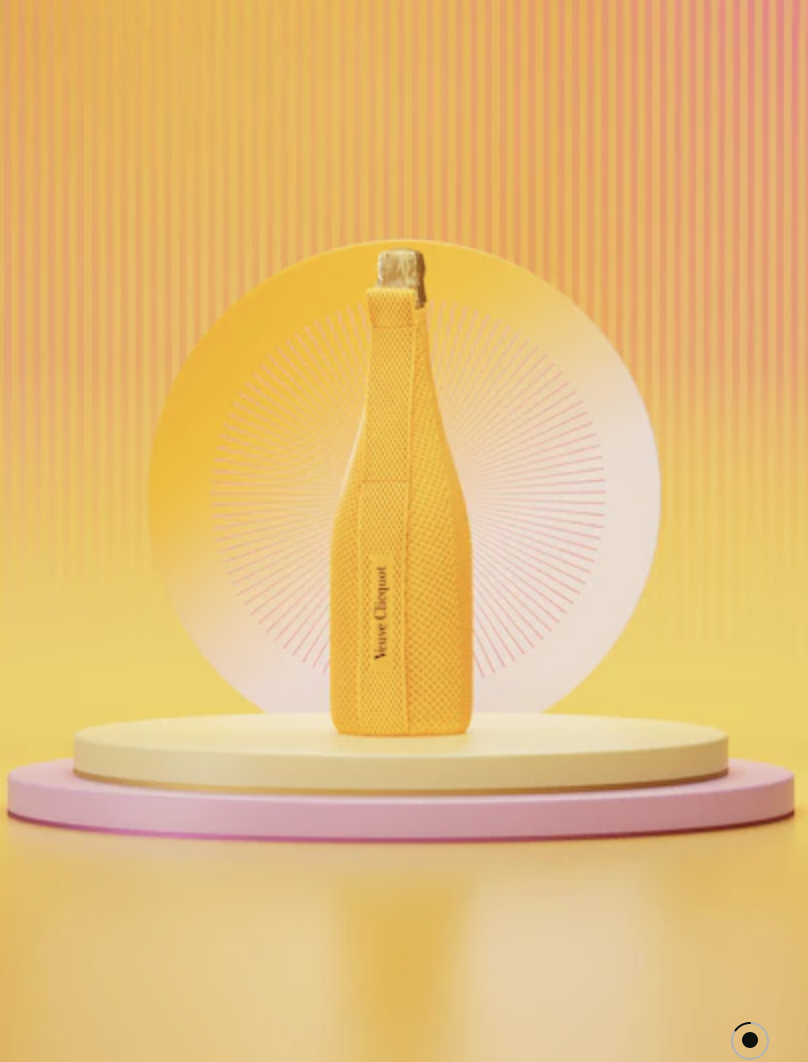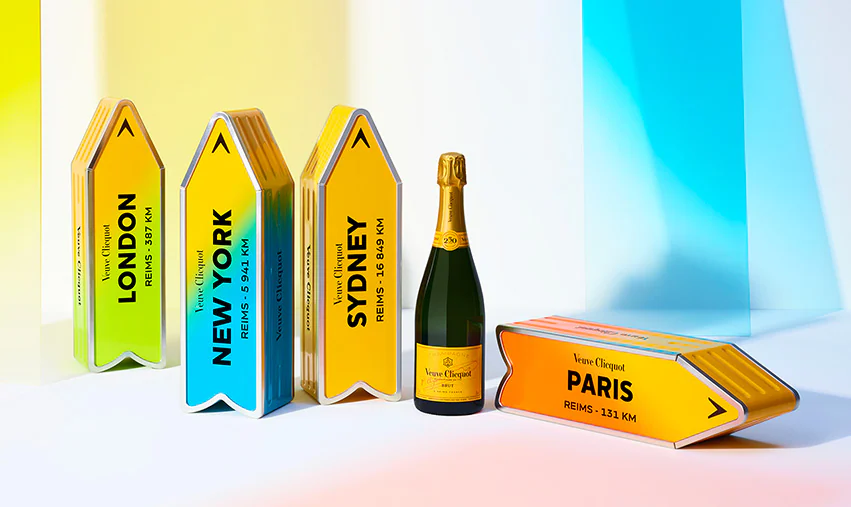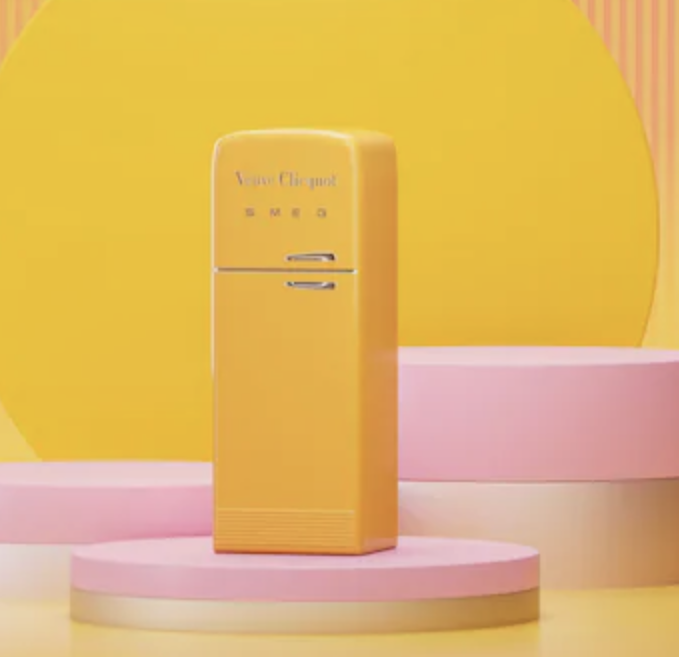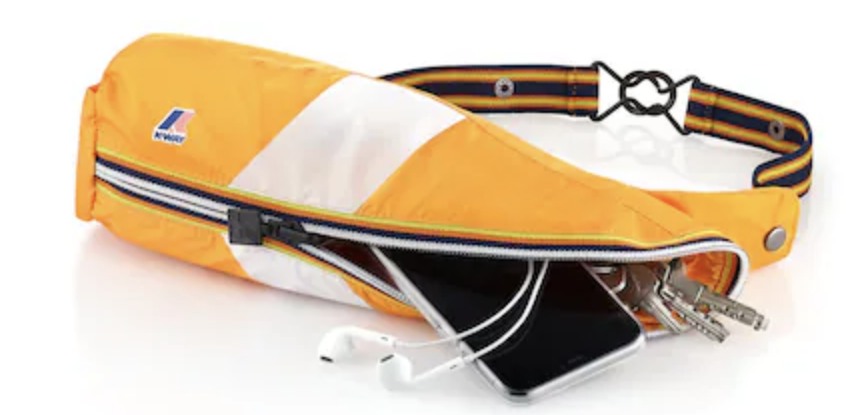I posted a few weeks on the amazing job Veuve Clicquot has done in consistently bringing to life and amplifying their brand assets, in particular their yellow (or orange?) colour. I touched on the brand’s use of secondary packaging in the post. But there is so much good “juice” to share on this topic that I felt it warranted a post of its own. And the post is just in time to give you idea for Christmas gift shopping!
In the world of Veuve Clicquot, secondary packaging is not just about protection or convenience; it’s an extension of the brand story and an integral part of the consumer experience. The brand has designed a whole series of brilliant concepts. From the visually striking Ice Jacket to the personalized ‘Arrow’ tins and the eco-friendly cardboard Ice Bucket, Veuve Clicquot has set a new benchmark in packaging creativity. These designs not only enhance the brand’s visibility but also add a layer of functionality, making them stand out in the crowded luxury bubbles market. Below we look at the brand’s smart use of secondary packaging.
1. Drive Distinctiveness: Yellow and Solaire Culture
Veuve Clicquot’s use of a vibrant yellow color in its secondary packaging drives brand recognition. This bold hue, synonymous with the brand, catches the eye immediately, whether on a store shelf or a dining table. This color choice is not just aesthetically pleasing and impactful. It also serves as a visual key that unlocks meaning, triggering positive emotions linked to the idea of sunshine. “Veuve Clicquot represents a profound state of optimism and solaire culture,” as CMO Carole Bildé explains (1).
2. Combine Style and Functionality: The Ice Jacket
The Ice Jacket is a prime example of how Veuve Clicquot blends style with functionality. Designed to keep the champagne chilled, this innovative jacket is both chic and practical. It addresses a real consumer need: maintaining the ideal temperature of your bubbles without compromising on elegance. The Ice Jacket, with its sleek design and practical use, enhances the drinking experience and reinforces the brand’s image as a purveyor of posh bubbles.

3. Build “In-Home POS”: The Arrow Tins
Veuve Clicquot’s secondary packs are so good, they take up residence in consumers’ homes (based on extensive, immersive research in the Taylor household). In this way, the brand is building “in-home POS” (point of sale)! By building a presence in the home, the secondary packs act as a continual reminder of the brand, keeping it top of mind.
The Arrow Tins make the perfect personalised gift. You can customise them with a city name and distance from the Veuve Clicquot winery in Reims (below). The tins are a memento worth keeping and displaying. This strategy ensures that the brand remains in the consumer’s consciousness long after the champagne is enjoyed.

4. Make Luxury More Sustainable: Mini Smeg Fridge
Acknowledging the growing consumer demand for more sustainable luxury, Veuve Clicquot has moved towards more eco-friendly secondary packaging. The super cute mini Smeg fridge is a good example. The gorgeous gift pack can keep a bottle chilled for up to two hours. It can also be reused as a design object after the inner vac form is removed. The boxes are made of 100% recyclable tin and the internal material is made of sugarcane waste.

5. Creative Co-branding: K-Way
A recent brand colab has seen the Ice Jacket reimagined by K-Way, the fashion-forward waterpoof outerwear brand I posted on here. The limited edition jacket looks stylish. But in another feat of functional creativity, the jacket can also be used as a bag afterwards.

Conclusion
Veuve Clicquot’s smart use of secondary packaging is a perfect blend of distinctive design and fabulous functionality. The packaging strategy not only enhance the consumer experience but also strengthen the brand’s image by being a powerful tool in brand storytelling.
Sources:
